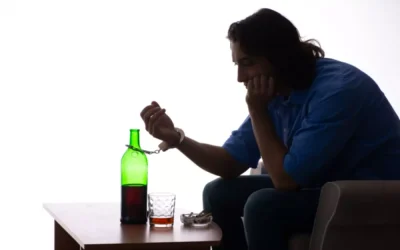Content
Maybe their doctors cautioned them that drinking and diabetes don’t mix. Perhaps some have health conditions that are incompatible with alcohol. Blackouts become more likely as your blood alcohol concentration reaches a high level quickly, as occurs with binge drinking. A total of 26 publications met the criteria to be included in the review (see Table 1 for study details). Fifteen studies examined prevalence and/or predictors of alcohol-induced blackouts.

Information from a healthcare provider will provide the best advice on how to drink alcohol safely. For some, the struggle of alcohol use precedes their development of diabetes. In other diabetes and alcohol blackouts cases, a person may develop a problem with drinking at some point after. In any case, alcohol use in both diabetics and nondiabetics can have deadly consequences without treatment.
Effects of Alcohol on Diabetes
Moderate drinkers, for example, have been shown to experience lower rates of cardiovascular disease. “Alcohol can cause rapid changes in blood sugar in people with diabetes,” said Dr. Jordan Pinsker, Vice Present and Medical Director at Tandem Diabetes Care. “While some drinks can raise blood sugar, the major concern is a rapid decline in blood sugar with alcohol use, causing a severe hypoglycemic reaction, even a seizure.” There are many resources available to help people cope with alcohol and substance abuse. Diabetes and alcohol abuse (such as binge drinking) can have long-lasting effects in some cases. For reference, the Centers for Disease Control and Prevention (CDC) defines moderate drinking as two drinks or fewer per day for men, or one drink or fewer per day for women.

Contact us today to find an alcohol treatment program for yourself or a loved one with diabetes. Many symptoms of hyperglycemia and hypoglycemia are similar to those of being drunk. Excessive alcohol, however, or chronic alcohol use can have several dangerous effects in the body of diabetics and nondiabetics alike. Alcohol slows down activity in the brain and throughout the body and can cause numerous effects from a feeling of relaxation to drowsiness and decreased coordination.
Symptoms Of Dangerous Drinking In Diabetics
Chronic heavy drinking, which involves drinking heavily on a daily or otherwise frequent basis, can cause damage to the pancreas, kidneys, heart, and liver. Liver and kidney https://ecosoberhouse.com/ damage, in particular, can pose several serious diabetic health risks. A blackout ends when your body finally absorbs the alcohol and your brain can make memories again.
- Furthermore, alcohol use was self-reported, and the accuracy of recall was not assessed.
- Blackouts are not necessarily a sign of alcohol use disorder, but experiencing even one is a reason for concern and should prompt people to consider their relationship with alcohol and talk to their health care provider about their drinking.
- The current study is one of the largest to explore the relationship between alcohol consumption and vascular outcomes and mortality in patients with type 2 diabetes.
- With this severe form of blackout, memories of events do not form and typically cannot be recovered.
- Despite the fact we could not measure source recollection, it is conceivable that recall performance for deeply encoded items would drop to a similar level seen for shallow encoding, after ingesting alcohol.
Hangover symptoms have also been shown to negatively impact memory [53]. However, note that hangovers and memory blackouts are not mutually inclusive; a blackout can occur with minor or no hangover symptoms, and similarly a hangover can occur without having also experienced a blackout. We have not found any work in the literature that has investigated both hangovers and MBOs concurrently.
Understanding Why Blackouts Happen
At the baseline study visit, the current average number of standard drinks of alcohol consumed within a week was recorded. Standard drink sizes were specified as a half a pint (0.28 L) of beer, 125 mL of wine, and one drink or shot containing approximately 25 mL of spirits. The type of alcoholic beverage consumed was further specified as wine, beer, or spirits. Similar data were also collected at the 24-month follow-up visit and the final study visit. These latter data, on the consumption of alcohol at 24 months, final study visit, and in the year prior to the diagnosis of diabetes, were, however, used only to establish the stability of alcohol consumption.
In this article, we will discuss what causes blackouts and when to see a doctor. Unless otherwise noted, all medical information was provided by Jordan Pinsker, MD, and Molly McElwee Malloy, RN, CDCES of Tandem Diabetes Care, Inc. Read more here about the difference between type 1 and type 2 diabetes. The most effective way to overcome alcohol use and addiction as a diabetic is to seek professional treatment. While feeling a bit dizzy or drowsy after drinking does not always signal harm for a non-diabetic, for diabetics this can signal larger problems.
Publication types
Of patients drinking alcohol, 1,335 primarily drank wine (median consumption of 5, IQR 2–10, drinks per week), while 2,054 primarily drank beer and spirits (median consumption of 7, IQR 3–14, drinks per week). One drink per day for women, and one to two for men, may also improve your insulin sensitivity and blood sugar management. As always, you should consult with your doctor to determine whether moderate alcohol consumption is right for you. We report notable drinking characteristics given by MBO participants who returned for follow-up testing in Table 3. Participant’s self-reported drinking behaviour is also given, recorded from participant’s drinking diaries. One of the male participants’ diary data was not filled in correctly, hence only data from 22 of the 23 are included in those figures.
- The nature of blackouts makes it difficult for researchers to examine the correlation between memory recall and blackout type.
- Moreover, our deeply encoded items were presented within a sentence context, which we did not test memory for.
- Both types are characterized by an inability to produce or regulate insulin in the body.
In total, participants gave five BrAC recordings during the course of participation. Table 2 details the quantity of alcohol administered, the mean time taken to consume the alcohol, and subsequent mean BrAC readings across the duration of the studies. Participants were asked to remain in the laboratory until their BrAC had dropped below the Scottish driving limit (BrAC 0.22mg/l, BAC 0.05%) during which time they were offered soft drinks. Based on the Marino and Fromme (2015) findings, one could speculate that a genetic vulnerability to alcohol-induced blackouts is expressed only under certain environmental conditions, representing a possible gene by environment interaction.
